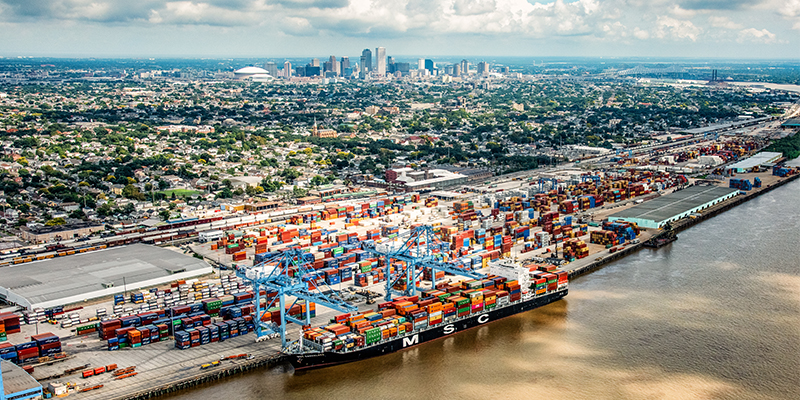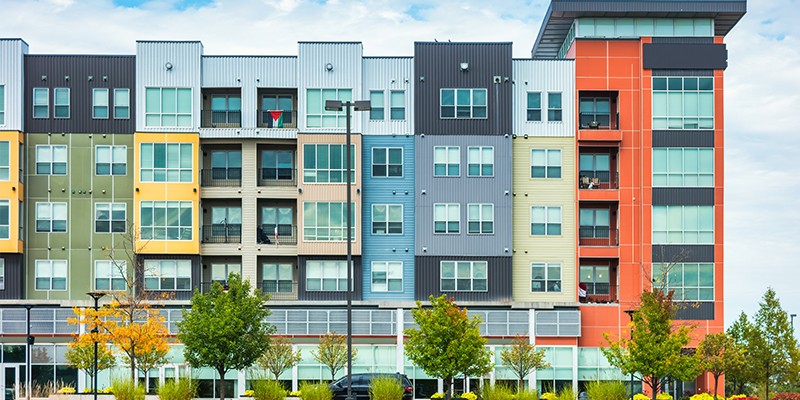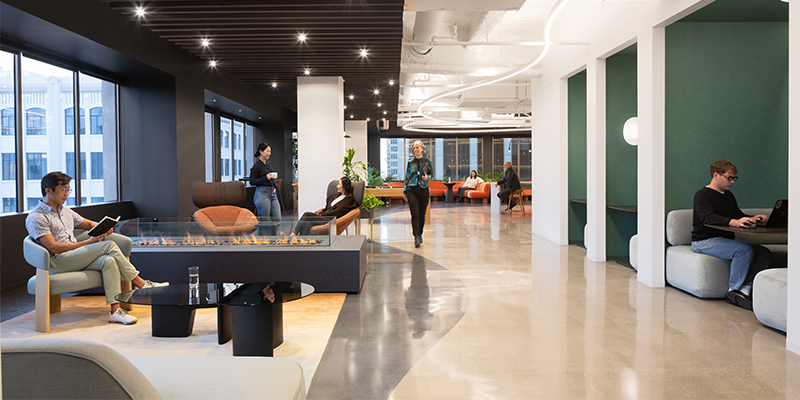By Logan Nagel
Stretching from the heart of the Texas oil world to the white sand beaches of Florida, the Gulf Coast has a lot of advantages. In 2024, NAIOP established its Gulf Coast chapter, bringing even more attention to this growing and uniquely high potential commercial real estate market.
The newest NAIOP chapter serves a geographic region stretching from eastern Louisiana through Mississippi and into far southern Alabama, an area with strong connections to industries like energy, petrochemicals and fishing – as well as a growing data center scene. Louisiana’s population growth trend was positive in 2024, reducing a few years of declines. And while Mississippi as a state is facing a slow population decline as a whole, the Gulf Coast region of the state is a bright spot of growth.
NAIOP’s Gulf Coast region includes both the Port of South Louisiana, the second-largest U.S. port by tonnage, and the city of New Orleans, itself a diverse economy and host to the sixth-largest U.S. port. Three of the top 10 largest U.S. refineries are in this part of Louisiana, while farther east, Pascagoula, Mississippi, is home to Chevron’s largest refinery operation and Ingalls Shipbuilding, the state’s largest private employer and a major supplier of the U.S. Navy. The region’s beachfronts are responsible for billions of dollars of tourism income each year with casinos and resorts located up and down the coastline. To the east, Mobile, Alabama, is home to the second fastest-growing port in the country alongside a range of shipbuilding, aviation and manufacturing companies responsible for many thousands of jobs.
It’s that string of ports driving much of the growth in the region. Whether shipping oil, natural gas or goods, the ports, rail lines, and highways of the Gulf Coast make for an enticing real estate market are, particularly for industrial product.
Interstate 10 is a focal point for much of this growth. The road strings together all the big Gulf Coast markets – Houston, Baton Rouge, New Orleans, Biloxi, Mobile, and Pensacola – allowing easy shipping access to the region’s ports, and consequently global markets. “We’ve had this chronic condition of being underbuilt along Interstate 10 since COVID-19,” said Evan Scroggs, president and managing principal at Lee & Associates Baton Rouge and a NAIOP Gulf Coast board member. Industrial vacancy rates are very low throughout the region, he added, meaning that companies seeking to move into the market or expand their presence have few options for space. “The only way development has really taken place over the years has been the slow, long, drawn out process of build-to-suits, which is a very inefficient way to go about adding quality warehouse space to the market.”
Some high-profile projects are getting off the ground. The Colliers Q3 2024 Gulf Coast Report lists several noteworthy projects throughout the area, such as a $21 billion liquefied natural gas terminal south of Baton Rouge and the largest master-planned industrial park in the Southeast, the South Alabama Logistics Park, located outside Mobile. Even more recently across Mobile Bay in Loxley, the Port Alabama Industrial Center will add another 12 million square feet of Class A industrial space when completed. Railroad company Norfolk Southern is also investing over $200 million to upgrade rail capacity between the port in the south and Alabama’s other communities in the north.
Specialty industrial property types are showing promise in the region as well. “We have very limited cold storage,” Scroggs said. “With the seafood industry coming out of New Orleans, the Mississippi Gulf Coast, and even over to Mobile, there’s absolutely demand for cold storage in our market… it’s a product type that has not seen any sort of speculative development over the last 10 to 15 years, maybe more.”
Another strong contender: data centers, represented best by a $12 million AI data center project near Baton Rouge. The potential locations for these facilities are very limited because they require close proximity to power generation.
Learn more about how to get involved with NAIOP’s chapter in the region.








